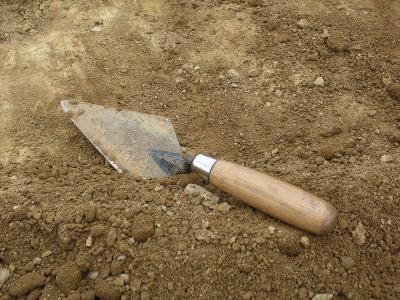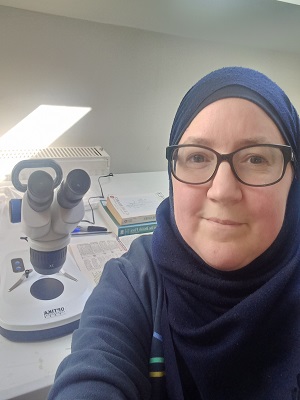Computational Application and Quantitative Methods in Archaeology International Conference
Computational Application and Quantitative Methods in Archaeology International Conference
Posted on 14 September 2022
Computational Application and Quantitative Methods in Archaeology International Conference
 Image from Wikimedia Commons
Image from Wikimedia CommonsBy SSI Fellow Emma Karoune.
The Computational Application and Quantitative Methods in Archaeology (CAA) International Conference is an annual event that brings together archaeologists, mathematicians and computer scientists. There are presentations, posters and workshops on a wide range of topics such as data acquisition and recording, conceptual modelling, data analysis, data management, digital 3D reconstruction, geophysics and GIS - all with an archaeology focus.
This year's conference took place in Oxford in August and it was the first for a few years to allow in person attendance. However, the organisers made sure that the whole conference was accessible through also providing full online attendance for giving talks and taking part in sessions. This was well organised and all sessions ran smoothly with particular care taken to allow attendees to ask questions whether you were in the room or attending virtually. This is not easy to achieve at such a large conference so I want to extend my thanks to the organisers for making this happen.
Collaborative working
I attended the conference in Oxford and presented a talk in the session on ‘Workflows and experiences on collaborative working and community building using digital tools’ (Session 15). This session aimed to discuss the rise in distributed teams and the implementation of digital tools such as communication channels like Slack or Signal, co-writing tools such as Google Docs or Overleaf, the use of online data and output repositories such as Open Science Framework or Zenodo, as well as code development and version control tools such as GitHub and GitLab.
The talks in this session were varied, including my presentation about our open source working approach for community building in the FAIR Phytoliths project. This included describing the setup of our project in Github for project management and open working throughout the project. I also spoke about how we are building an Open Phytoliths community around the FAIR Phytoliths Project with a focus on training in computational skills and open science practice. We are particularly keen to make our work accessible globally and we have just built a multi-lingual website (Open Phytoliths (open-phytoliths.netlify.app)). We have a large number of researchers in our community that speak Spanish as their first language so we want to make sure that all of the work and training we do is accessible to them.
There were also talks by Clemens Schmid about the practical challenges of establishing an aDNA data management system, and Martin Hinz talking about his experience of running a CAA special interest group on scientific scripting languages in archaeology.
Digital tools
I was particularly interested in the presentation by Sophie Schmidt and Florian Thiery on collaborative writing using GitHub. They spoke about their familiarity of working with GitHub for software and code development, which led them to implement a similar approach for their writing. They started writing in a single markdown file and changes were organised into pull requests with commits that could be commented on or modified. They also suggested that GitHub could be used for further development of the paper after submission and publication. This is an interesting concept to start to think about how GitHub could be used to collect comments and answers to the paper, maybe for review purposes or for continuous development of a particular new method or idea.
The discussion at the end of this session made a few conclusions: i) digital tools allow us to work in collaborative distributed teams more effectively; ii) there is still a large barrier to working in this way due to the skills needed to use some of the digital tools and scripting languages; iii) and therefore more training is needed to advance and accelerate the implementation of these methods in archaeology.
Abstracts for all the sessions of this conference can be found here: Programme - CAA 2022CAA 2022 (caaconference.org).
If you would like to find out more about the Computational Applications and Quantitative Methods in Archaeology International Organisation, then please see their website here.

